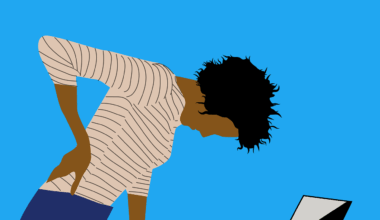The Benefits of Cross-Training for Ice Hockey Players
Cross-training involves incorporating various physical activities into an athlete’s training regime. For ice hockey players, cross-training provides a multitude of benefits that can enhance performance on the ice. Engaging in different sports helps develop overall athleticism and can improve specific attributes crucial for hockey. For instance, activities like swimming enhance cardiovascular endurance, while strength training builds the muscles necessary for skating and physical confrontations. Additionally, cross-training can prevent injuries by promoting balanced development, decreasing overuse in any one set of muscles. By engaging in varied activities, players can reduce the likelihood of strains and sprains often associated with repetitive motions. Furthermore, cross-training can contribute to improved mental health as players enjoy the diversity in workout routines, keeping their motivation high. When players participate in different sports, they also gain new skills that can translate into better on-ice performance. Techniques learned in one sport can improve hand-eye coordination and agility in another. Thus, integrating cross-training into an ice hockey training regimen can lead to a well-rounded athlete capable of handling the rigors of the sport, bringing a fresh perspective and renewed enthusiasm to their hockey training.
Moreover, cross-training for ice hockey players allows for enhanced agility and flexibility. Agility is crucial for navigating the fast-paced game and making quick directional changes while avoiding opponents. Activities such as basketball or soccer amplify foot speed and agility through dynamic movements, which can be extremely beneficial on the ice. Practicing these sports can develop quick reflexes and improve the athlete’s ability to anticipate opponent movements. Likewise, yoga and Pilates, incorporated into cross-training, can significantly improve flexibility. Enhanced flexibility not only aids performance but also increases range of motion, which is vital for skating, shooting, and executing quick maneuvers. With improved flexibility, ice hockey players can execute better turns and maintain balance even during swift movements. Furthermore, increased range of motion helps in executing powerful passes and shots, directly enhancing scoring opportunities during games. The cumulative effect of improved agility and flexibility can lead to better on-ice competitiveness. By focusing on these aspects of training, players not only elevate their performances but also maintain a healthier body, which is paramount in a sport where speed and precision are cornerstones of success.
Focusing on different muscle groups through cross-training also aids in recovery. When ice hockey players perform a wide variety of activities, they avoid the pitfalls of overworking specific muscle groups crucial for their primary sport. For instance, cross-training activities like cycling or rowing help in maintaining cardiovascular fitness while allowing the leg muscles to recover from the hard impacts of skating. This active recovery becomes essential; it allows players to sustain performance levels during the hockey season while decreasing fatigue. Furthermore, mixing low-impact activities with high-impact ones leads to better muscle recovery, promoting longer-term athletic progress. Additionally, incorporating less intense activities helps enhance players’ overall stamina without putting undue strain on their bodies. As injuries weigh down a player’s performance over time, integrating specific cross-training methods allows for muscle strengthening, which equates to enhanced durability on the ice. Consequently, athletes feel more energized, less fatigued, and can practice longer and with more intensity. Furthermore, using varied cross-training strategies often leads to improved mood and motivation as players continually face new challenges and skill sets while still focusing on their core ice hockey training.
Boosting Endurance
Endurance is another essential aspect where cross-training shines for ice hockey athletes. The demands of ice hockey require players to maintain high energy levels throughout the game, which generally lasts from 60 minutes to even longer during tournaments. Engaging in cardiovascular activities such as long-distance running or cycling improves aerobic capacity, enhancing endurance and allowing players to recover quickly between plays. This conditioning means they can maintain their effectiveness even during the latter parts of the game when fatigue typically sets in. Likewise, sports that require sustained physical effort, like cross-country skiing, contribute effective aerobic conditioning specific to what’s used in ice hockey. These activities enhance the ability to sustain a high level of performance over extended periods. As the game progresses, players with superior endurance can outlast their competition, displaying consistent energy levels and responsiveness. Moreover, increased endurance translates to better decision-making under pressure. When players are physically capable of maintaining their game intensity, they are more composed during critical moments, leading to improved overall game performance and a driving edge over less-conditioned players.
An often-overlooked benefit of cross-training is its contribution to fostering teamwork and social skills. Ice hockey is inherently a team sport, and effective communication is crucial for success. By engaging in other sports, players have opportunities to learn teamwork dynamics that complement their hockey experience. Training within different environments provides players with unique perspectives and enhances their ability to adapt to various team scenarios. For example, team-building activities in alternative sports can improve interpersonal skills, such as collaboration and communication, that are essential on the ice. When players learn to interact and trust teammates during different sports, that same camaraderie transfers to their main sport. This can strengthen their bond and create better synergy during games. Additionally, engaging with new groups expands players’ networks, which can be beneficial for future opportunities and friendships within sports. Joint training sessions across multiple activities create excitement and boost morale as players cheer and support each other. The fun elements often found in these varied exercises can mitigate stress associated with competitive hockey training, ensuring players enjoy their journey while developing crucial skills that cater to better gameplay.
Enhancing Mental Toughness
The psychological facet of sports is immensely important, and cross-training plays a significant role in enhancing mental toughness among ice hockey players. Engaging in diverse sporting activities pushes athletes outside their comfort zones, forcing them to confront new challenges. This process enhances resilience—an integral trait for athletes competing at high levels such as ice hockey. Players face mental hurdles while mastering different techniques and strategies, which can translate into improved focus during crucial game moments. For instance, learning to fail and persevere in one sport can bolster self-confidence and coping mechanisms in another sport, fostering the mental aptitude needed for ice hockey. Cross-training allows athletes to build mental fortitude as they handle the pressures of different sports environments. Whether it’s competing for a win or mastering a new skill, overcoming these challenges can lead to a more robust mindset overall. Furthermore, with improved mental resilience, players can better handle game-day pressures, focus under chaotic conditions, and maintain consistent performances throughout the season, ultimately contributing to their overall success on the ice.
Finally, cross-training encourages a lifelong commitment to fitness and health, which extends beyond the ice. By experimenting with different types of physical activity, ice hockey players can find interests that may last well into their post-athletic careers. Diverse forms of exercise ensure that players remain physically active and engaged throughout their lives, promoting a culture of health and wellness. Such practices help in preventing age-related health issues many athletes face after their careers end. Upon retiring, former players familiar with cross-training principles are more likely to continue exercising, facilitating a smooth transition into a balanced lifestyle. Additionally, players who explore various sports lower their risk of developing burnout from their primary sport. The ongoing excitement of learning and mastering different skills keeps fitness enjoyable rather than a chore. As more individuals embrace a physically active lifestyle, the community establishes positive patterns of health and fitness that influence future generations. As athletes transition into coaching or mentorship roles, they can also foster these values among younger players, reinforcing the significance of maintaining health and fitness beyond their sporting careers.
In conclusion, the many advantages of cross-training for ice hockey players cannot be overstated. The incorporation of various sports and activities into their training regimen contributes positively to their overall athletic development, injury prevention, mental health, and performance capacity. From enhancing endurance and agility to fostering teamwork and instilling valuable life lessons, cross-training provides players with much-needed tools to thrive in their primary sport. Furthermore, developing mental toughness through challenges presented in diverse sports not only serves to bolster in-game performance but also helps athletes navigate life’s challenges outside the rink. By embracing a culture of cross-training, players also encourage the pursuit of lifelong fitness and health, setting the stage for a successful athletic career and a healthy lifestyle thereafter. Coaches can promote these benefits by designing training programs that incorporate cross-training principles, ensuring players receive well-rounded development. In sum, the journey of an ice hockey player becomes much more enriching and fulfilling with the adoption of cross-training. By encouraging players to embrace various physical activities, they set themselves up for better performance with a greater sense of well-being.





